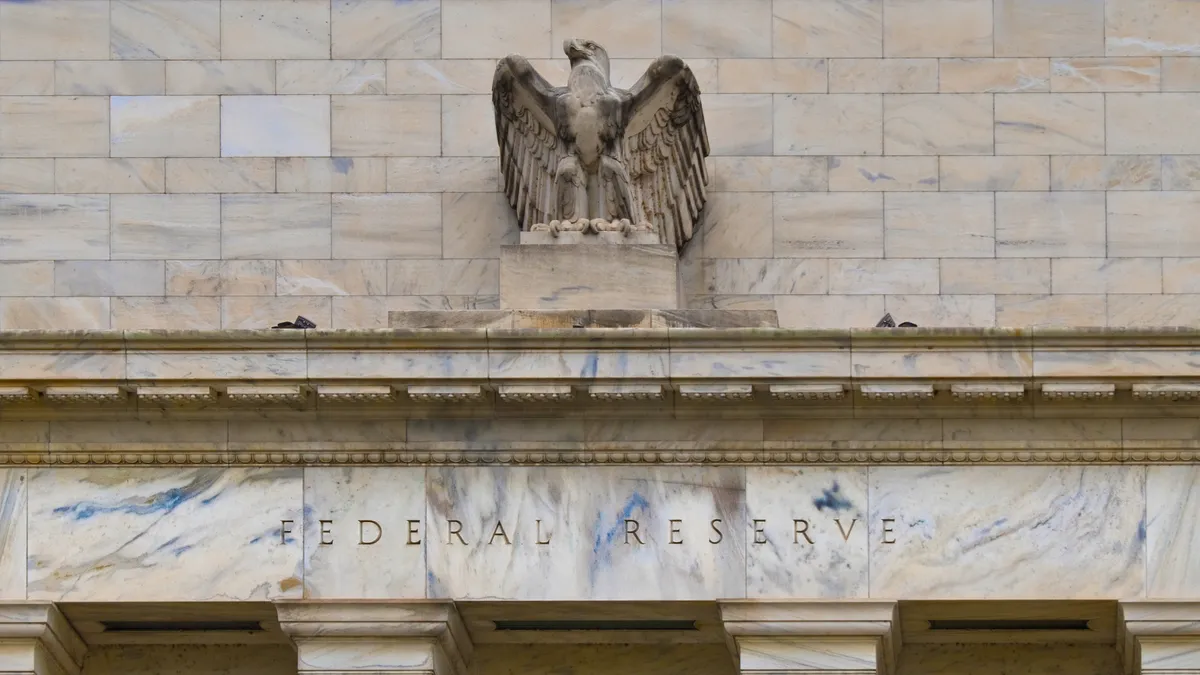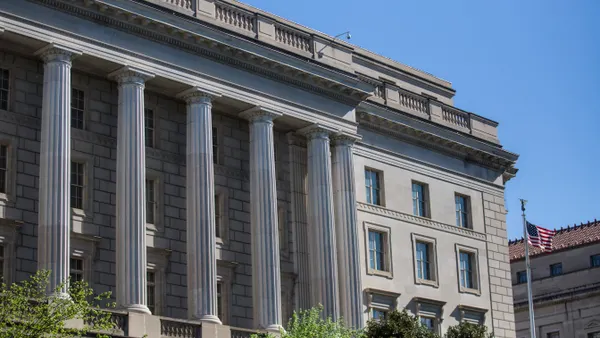Dive Brief:
- The Federal Reserve will probably hold the main interest rate at the highest level in 23 years before making two, quarter-point reductions in borrowing costs during the fourth quarter, Conference Board Principal Economist Erik Lundh said Wednesday.
- “We had a challenging first quarter in 2024,” Lundh said, referring to efforts by Fed policymakers to curb inflation to their 2% goal. “After seeing a lot of progress over the course of last year, that progress really stalled,” he said during a webcast.
- Stubborn increases in prices for shelter, energy and insurance premiums stoked inflation during Q1, he said, forecasting that the central bank is unlikely to restore inflation to 2% before Q2 2025. The Conference Board previously predicted that the Fed would make the first rate cut in June.
Dive Insight:
Fed policymakers held the federal funds rate between 5.25% and 5.5% on May 1, noting little recent progress in their two-year fight to beat back inflation. They said that they need greater confidence that inflation is falling at a sustainable pace before beginning to trim borrowing costs.
“So far this year the data have not given us that greater confidence,” Fed Chair Jerome Powell said during a press conference after a monetary policy meeting. “It is likely that gaining such greater confidence will take longer than previously expected.”
Other Fed officials in recent days have noted unexpected strength in economic growth and hiring during Q1 and aligned with Powell’s view.
“The recent upward surprises to activity and inflation suggest the likely need to keep policy at the current level until we have greater confidence that inflation is moving sustainably toward 2%,” Boston Fed President Susan Collins said Wednesday.
“The recent data lead me to believe this will take more time than previously thought,” Collins said.
Minneapolis Fed President Neel Kashkari on Tuesday echoed Powell.
“While we saw rapid disinflation in the second half of 2023, that progress appears to have stalled in the most recent quarter,” Kashari said in an essay.
“The question we now face is whether the disinflationary process is in fact still underway, merely taking longer than expected, or if inflation is instead settling to around a 3% level, suggesting that the FOMC [Federal Open Market Committee] has more work to do to achieve our dual mandate goals,” Kashkari said.
The FOMC may need to adjust policy to the fact that the so-called neutral federal funds rate — which neither slows nor spurs demand — may be higher now than prior to the pandemic, he said.
“With inflation in the most recent quarter moving sideways, it raises questions about how restrictive policy really is,” he said. “If policymakers and market participants are misperceiving the neutral policy rate, that could explain the constellation of data we are observing.”
Policymakers, in their most aggressive tightening in four decades, slowed inflation from as high as 9.1% in mid-2022 but have failed in recent months to make significant progress in the “last mile” of curbing price pressures to their goal.
Fed officials in March forecast in a median projection that the central bank this year would trim the main rate in three, quarter-point increments. Since then, data has revealed a stubborn inflationary trend this year in prices paid by both consumers and producers.
Consumer spending is likely to slow in coming months, Lundh said, which would ease price pressures.
Households will likely reduce outlays as income growth slows, savings declines and debt rises, he said. Consumption growth for several months has outstripped income gains and “the spread is intensifying.”
Meanwhile, credit card debt during Q4 rose to a record $1.1 trillion, “so we’re seeing delinquencies rise as well,” he said.
Also, households have run down savings built up during the pandemic, he said. “The sort of push into spending that was associated with these excess savings has run out.”
Although consumers will probably pull back, the Conference Board has scuttled its forecast that the economy will fall into recession, Lundh said, citing favorable “fundamentals” including steady labor market strength.












